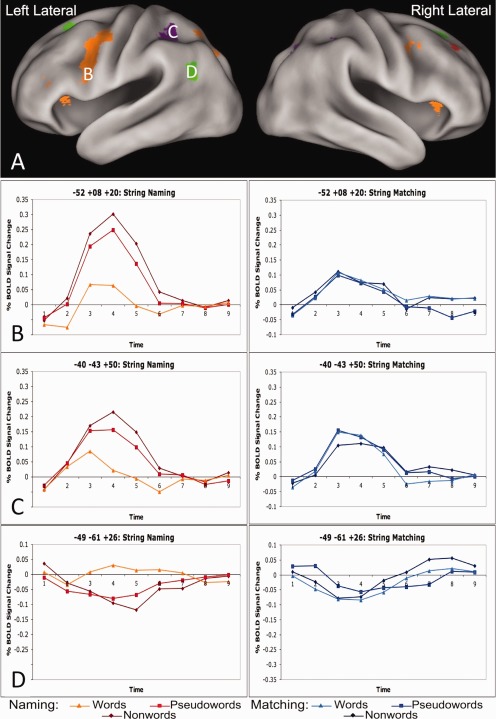Figure 4.

Examples of regions showing three types of string type × task × timecourse effects. A: Lateral views of regions showing a string type (nonwords vs. pseudowords vs. words) by task (matching vs. naming) by timecourse interaction. B: Timecourses from an exemplar orange region (left lateral IFG: −53, 8, and 20) in the string‐naming task in the left panel and string‐matching task in the right panel. While there is positive activity in both the naming and matching tasks, there is also task × time effect in this region. Moreover, there is an effect of lexicality (pseudowords and nonwords > words) in the naming, but not the matching task. C: Timecourses from an exemplar purple region (left lateral parietal: −40, −43, and 50) in the string naming task on the left and string matching task on the right. There is no task × timecourse effect in these regions and the string type × task × timecourse interaction is driven by an effect of string type (nonwords > pseudowords > words) in the naming task while there are no such differences in the matching task. D: Timecourses from an exemplar green region (left AG: −49, −61, and 26) in the string‐naming task on the left and string‐matching task on the right. There is no task × timecourse effect in the green regions, and the string type × task × timecourse interaction is driven by the a lexicality effect (pseudowords and nonwords < words) in the string naming task but no lexicality or string type × time effects in the string matching task.
